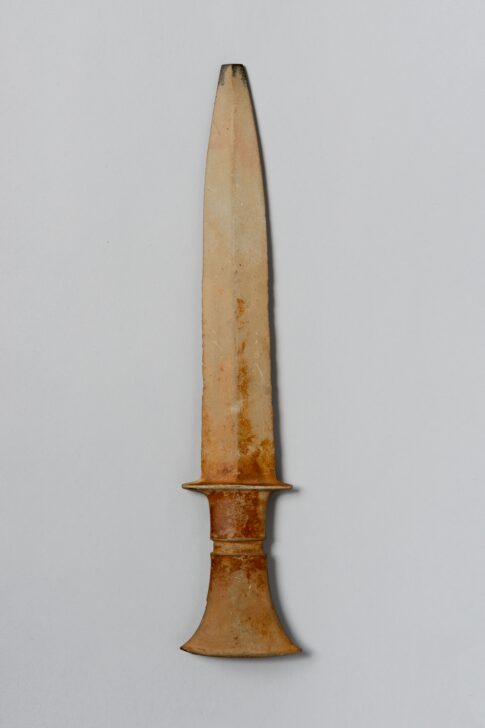Polished Stone Dagger
Korean

Description
Subject Matter:
Groundstone daggers were frequently excavated from burials of the Mumun Pottery Period. Archaeologists consider these daggers as prestige or ritual objects rather than utilitarian swords due to their brittle nature, presence in mortuary contexts, and additional labor and skill required in their production. Groundstone daggers may have been copies of Chinese bronze daggers.
Physical Description:
This stone dagger has a handle that is divided into two parts, separated from each other by a thinner band. The upper tier is smaller in length than the lower tier, which flares outward as it approaches the end. The tip of blade is broken off. In profile, the blade thickens in the center.
Carved from stone, this dagger with a two-tier handle is missing only its tip. The cross section of the blade is rhomboid, while that of the handle is shaped like a convex lens. The dagger is of the later two-tier-handled type (idanbyeongsik), meaning that it probably dates from the end of the early Bronze Age or the beginning of the middle Bronze Age. Max Loehr (1903- 1988) was a German art historian specializing in East Asian art who taught at the University of Michigan from 1951 to 1960 as a professor.
[Korean Collection, University of Michigan Museum of Art (2017) p.32]
Usage Rights:
If you are interested in using an image for a publication, please visit https://umma.umich.edu/request-image/ for more information and to fill out the online Image Rights and Reproductions Request Form.